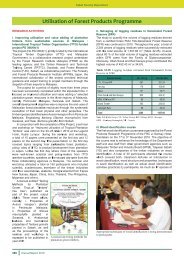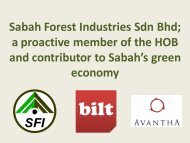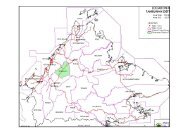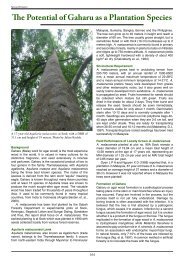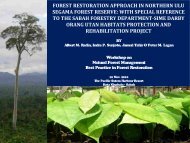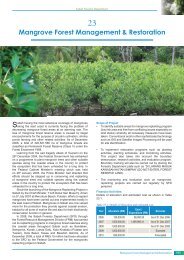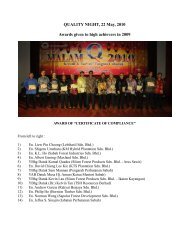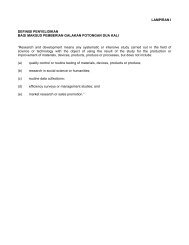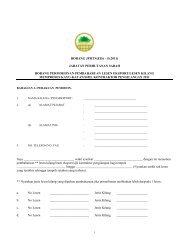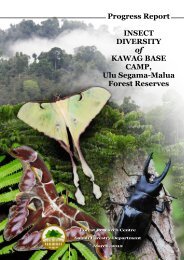Forest Management Plan - Sabah Forestry Department
Forest Management Plan - Sabah Forestry Department
Forest Management Plan - Sabah Forestry Department
You also want an ePaper? Increase the reach of your titles
YUMPU automatically turns print PDFs into web optimized ePapers that Google loves.
that provides the main forest structure and largely contributes to the stem numbers andbasal area. Dipterocarp species are also dominating the residual forest canopy.Figure 2.4: Original forest formation in FMU 17AThe second largest formation is ultramafic forest (UF), which once covered an area of13,403 ha (27 % of FMU 17A), mainly found in Sg. Pinangah FR. The ultramafic soils arecategorized as marginal, deficient in phosphorus, potassium and calcium; usually containhigh concentrations of magnesium, chromium, cobalt and nickel. These areas are usuallypredominated by a series of high ridges, steep slopes (above 25°) and V-shaped valleys.The coverage of lowland and upland UF areas are 5,896 ha (12 %) and 6,574 ha (13 %) ofthe total FMU 17A area, respectively.On higher elevations, the lower montane forest covers at least 114 ha or 0.2 % of FMU17A. In alluvial fans, which derive from upland or montane ultramafic soils, usuallyassociated with streams (Binalik Association), the forest is classified as lowland Alluvial-Ultramafic <strong>Forest</strong>. This forest naturally shows a broken canopy structure with amixture of tree species commonly found in MDF and UF, and pockets of open areainfested with climbing bamboos. To a small extent, the forest occurred on broad alluvialterraces to gentle undulating terrain. Collectively, the forest covered an area of 808 ha(1.6 % of total FMU 17A area). The Upland Kerapah-Ultramafic <strong>Forest</strong>, (1,128 ha) or 2.311



